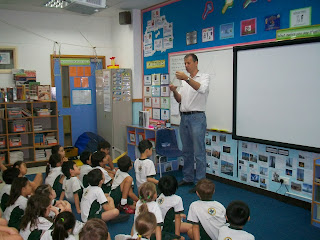I won’t keep you in suspense any longer: Feet on Floor, Bums on Chairs.
I’ve started trialling
mindfulness in my classroom (or just a chance for a few minutes of silence from
my highly productive, very noisy fifth grade class), and it’s going surprisingly
well.
It’s not hard. It
takes a bit of training. It takes one or
two minutes, a few times a day or every time you feel like your head is going
to blow off. The students love it. They request it. It slows them down. It quiets them down. A less nice way to say it? It shuts them up.
But joking aside, when students sit quietly for a moment or
two, focus on their breath (after getting their giggles out of the way and their initial holding of the breath and dragon-like releases that will inevitably be
the first experiences of your fof boc-ing), something happens that is quite
magical. There is focus, and not just
focus of the usual fifty to seventy percent, but a collect consciousness focus
that one rarely sees outside of a Buddhist retreat.
And what happens when there is 100% focus? You get students all on the same page:
receptive, ready to think, to listen, to collaborate. They’ve cleared their minds of boy germs and
girl germs and worries and "I don't want to's," and they are good to go.
It’s a little mini miracle right there in your classroom,
and you can get it two, three, maybe even four times a day: students who are clear, present, and ready to
inquire.
So how do you Fof Boc?
There are no rules that I know of, though mindfulness training in the
classroom is becoming a very popular topic that you can investigate at your
leisure. All we do in our classroom is sit up straight, with our palms up resting on our thighs, and I say, “Breathing in…breathing out,” about ten
times. I breathe with them. We usually close our eyes.
That’s it. Fof
Boc. At least three or four times a day
I’ll hear, “Ms. Rempel, when are we going to Fof Boc?” That’s when I usually do it. Or when I need a few minutes to breathe
myself.



































